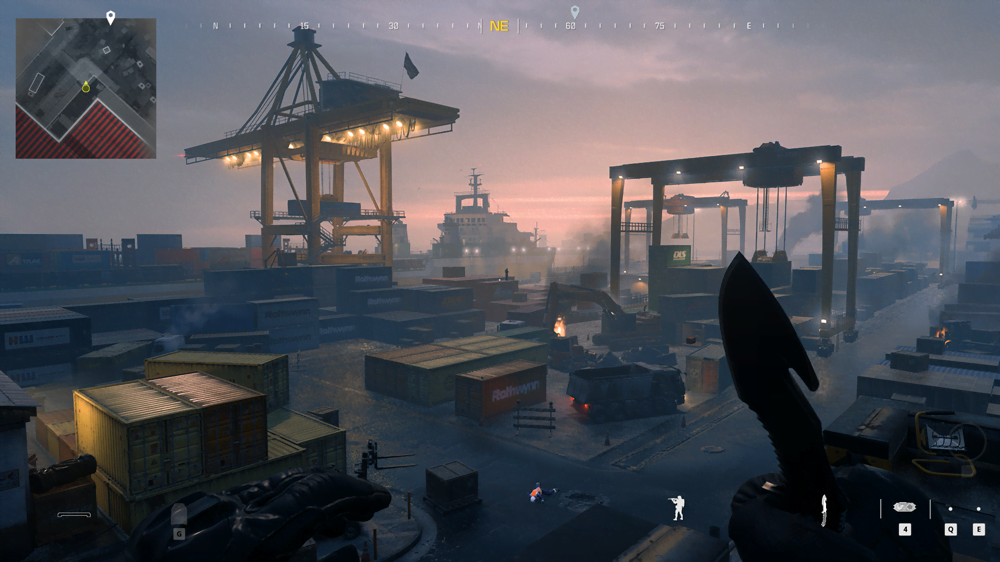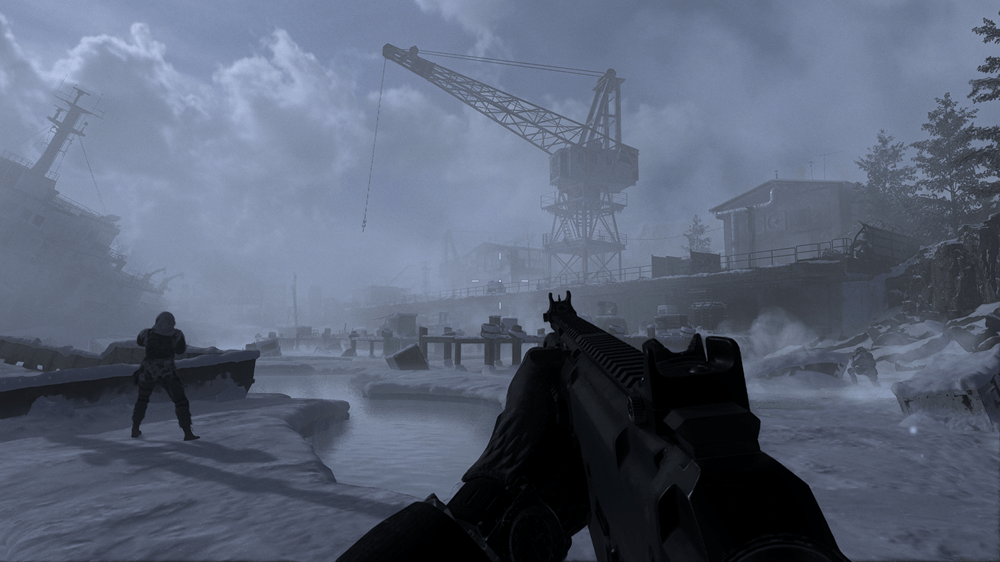For some time, it was suggested that 2023 would come and go without a new Call of Duty. This was almost unthinkable, given the clockwork predictability of this juggernaut franchise. In the end, Call of Duty: Modern Warfare III has arrived – the 20th fully-fledged entry to mark the series’ 20th anniversary. Call of Duty has racked up well over 400 million sales, and this latest slick sequel is sure to be a blockbuster in its own right.
Not for the first time, this Call of Duty arrives shrouded in controversy and against a discomforting context. Its grittily realistic combat and scenes of terror chime unpleasantly with an increasingly, tragically warlike real world. It is also the first game in the series to be released since Microsoft’s greatly delayed acquisition of Activision-Blizzard. Finally, there has been extensive coverage of the game’s punishing production, during which it was reportedly elevated from the status of DLC for Modern Warfare II to full-blown sequel.
While the full inside story remains unclear, what is definite is that this is a true sequel. Call of Duty: Modern Warfare III comes with a single-player campaign which is only a little more brief than usual, and an almost overwhelmingly extensive multiplayer portion. With this being established, some long-term players may feel short-changed by the menu that Sledgehammer Games – and several support studios – have cooked up.
On the solo front, Modern Warfare III is a direct sequel to last year’s game. This in itself is unusual for the series, which tends to put years between successive entries in its various sub-series. The familiar figures of Task Force 141 – which is to say Captain Price, Gaz, Soap, and Ghost – are once again back in action. This typically globe-trotting saga takes place in fictional countries Kastovia and Urzikstan, a Greek island, and the Siberian tundra. As usual, the presentation is superb, with top-notch visuals and cutscenes.

As a story, Modern Warfare III leaves a bit to be desired. The narrative picks up more threads from the 2019 game than it does from the 2022 one. Once again, Task Force 141 are up against the resurgent Russian ultranationalist Makarov, and his malevolent private army the Konni Group. At times, the story feels disjointed – particularly towards the end of the four-hour campaign. The plot’s weaknesses may be a product of the game’s unusually brisk 16-month production cycle. The constant switching of playable characters also adds more confusion than usual.
In gameplay terms, Sledgehammer Games have made some notable changes this year. The biggest of these are “open combat missions”, the studio’s quaint term for non-linear scenarios. These represent a breath of fresh air for a series that has often been suffocatingly restrictive. While it is true that these sandboxes crib some features and even locations from the free-to-play Warzone, they often work wonderfully well.
The last of them, for example, sees Ghost working to defuse four bombs around an extensive dam complex in Kastovia. The charges can be dealt with in any order, and can be approached in various ways – including underwater routes. Stealthy and gung-ho approaches are equally viable, as is any combination of the two. In these missions the player can find and deploy a wide range of weapons and tools familiar from multiplayer, including bomb drones, airstrikes, mortar strikes, and automated turrets. Like Titanfall 2 before it, Call of Duty: Modern Warfare III often deftly integrates multiplayer concepts into its solo story. This is not laziness, it is clever and engaging design.
The campaign is far from perfect, however. At times it feels over-familiar – the opening mission too closely resembles the military base raid in Modern Warfare II, and there is yet another gunship sequence. It is also undeniable that a 13-mission, four-hour campaign still feels very brief, despite the non-linear missions offering greater replayability than before. It’s also a shame that there is no return to Mexico, and to the engaging characters introduced there in Modern Warfare II.

The multiplayer side also shows signs of a rapid production cycle. Most noticeably, all of the multiplayer maps included here are heavily revamped versions of the maps from the original 2009 version of Modern Warfare 2. While new layouts are promised in future updates, and these classics have nostalgia value, it is easy to see why some players will feel under-served. Similarly, the Zombies mode uses the same Urzikstan map which will feature in the next iteration of the free battle royale game Warzone.
At this point, Zombies is increasingly looking like something which the Call of Duty studios are making out of obligation, rather than genuine enthusiasm. Here, the mode is reimagined as a so-called extraction shooter, made up of listless mini-challenges spread around the map. The zombies are hardly the only lifeless aspect of this game mode, and at times it threatens to resemble the catastrophe of Redfall.
It is the mainline multiplayer modes which will keep people coming back. The most interesting new addition this year is Cutthroat, which is a particularly vicious battle to the death between not two but three teams. The extremely short round times and the brief “time to kill” or TTK of Modern Warfare III can result in a lot of waiting around, however.
Call of Duty: Modern Warfare III arguably sees the series in something of a holding pattern. It neither completely finishes the solo narrative, nor revolutionises the online experience. Indeed, this release may well be quite unlike what Sledgehammer Games were originally meant to deliver. Established series veterans will grumble about the relative lack of completely new material, but this is another polished continuation for a series which likely has another decade left in it.





